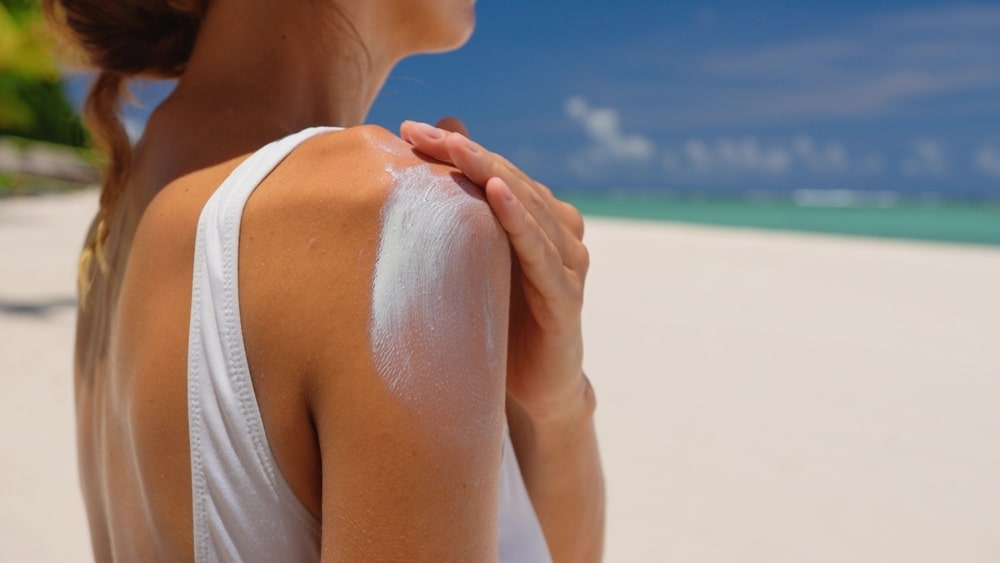Active ingredients in sunscreen get a lot of attention when decoding ingredient lists—and for good reason. They shield your skin from the sun, so it's important to know which ones are in your sunscreen and how they work.
They're not the only ingredients in sunscreen, however. Inactive ingredients don't necessarily provide sun protection but serve other key purposes. Both types of ingredients are necessary to make sunscreen formulas effective and comfortable to wear.
Here's everything you need to know about inactive versus active ingredients in sunscreen so you can choose the best one for your skin's unique needs.
What Are Active Ingredients in Sunscreen?
Active ingredients protect you from the sun's harmful ultraviolet (UV) rays.
There are two main types of sunscreen: chemical and mineral (or physical). The main difference between them is the active ingredients they contain, which work differently:
- Chemical UV filters work like sponges to absorb UV rays and release them as heat.
- Mineral UV filters coat the skin like a shield, creating a layer of protection on your skin's surface.
Neither is more effective than the other, but they each have advantages and disadvantages. The one that's right for you ultimately comes down to personal preference.
Active Ingredients
Currently, 17 active sunscreen ingredients are approved for use in the United States. Here are the most common ones and how to decide between them.
Mineral Active Ingredients
Mineral sunscreens use two active ingredients:
- Zinc Oxide
- Titanium Dioxide
These ingredients physically block the sun, provide broad-spectrum protection, and work immediately because they don't need to absorb into the skin. The American Academy of Dermatology (AAD) recommends mineral actives for sensitive skin, as they're less likely to cause irritation. However, these ingredients can leave a white cast on the skin.
An example of a sunscreen with 100 percent mineral actives is EltaMD UV Active Broad-Spectrum SPF 50+. This formula is water-resistant, hypoallergenic, and won't rinse off or drip into your eyes.
Chemical Active Ingredients
More than a dozen active ingredients are used in chemical sunscreens, but these are the most common:
- Avobenzone
- Octinoxate
- Oxybenzone
- Homosalate
- Octocrylene
Chemical sunscreen is often considered easier to apply than mineral sunscreen. It's not as thick, so it spreads easily and doesn't leave behind a white cast. However, chemical sunscreen filters must be combined to protect against both UVA and UVB rays, and they don't work immediately. You need to wait at least 15 minutes after applying before going out in the sun.
Hybrid Sunscreens
If you don't want to choose between chemical and mineral sunscreens, you don't have to. Consider hybrid sunscreens, which contain both types of active ingredients. Many EltaMD sunscreens, such as EltaMD UV Sheer Broad-Spectrum SPF 50+, combine the two. This creates a broad-spectrum sunscreen that absorbs quickly and wears comfortably on the skin, offering the best of both worlds.
What Are Inactive Ingredients in Sunscreen?
Any sunscreen ingredient that isn't an active ingredient is by default an inactive ingredient, per the US Food and Drug Administration. Here's why your sunscreen wouldn't be the same without them.
Inactive Ingredients and Their Roles
Inactive sunscreen ingredients serve many purposes. Here are some examples and what they do.
Solvents
Solvents, such as water and oil, help stabilize the formula. They can also increase the sunscreen's efficacy.
Antioxidants
The sun is a significant source of free radicals, which can lead to skin damage. Antioxidants help ward off these unstable molecules and repair skin damage. So, look for sunscreens with ingredients like Vitamin C, Vitamin E, and Niacinamide.
Humectants
Humectants include Hyaluronic Acid, Glycerin, and Aloe Vera. These ingredients attract and bind water, which increases the skin's water content, making them especially beneficial if you have dry skin.
Emollients
Emollients, like Squalane and Dimethicone, help soften skin. You'll find them in moisturizing sunscreens like EltaMD UV Restore Broad-Spectrum SPF 40.
Preservatives
Cosmetics inevitably expire, but preservatives help increase their lifespan. They prevent sunscreen from spoiling, helping it stay effective longer.
Fragrance
Sunscreen can have a distinct smell, so manufacturers may add fragrance to improve the sensory experience. However, fragrance can increase skin sensitivity. Opt for fragrance-free formulas if you have sensitive skin, skin conditions like rosacea or eczema, or skin allergies.
Pigments
Tinted sunscreens like EltaMD UV AOX Elements Broad-Spectrum SPF 50 contain pigments called Iron Oxides. These provide light coverage to even out skin tone and additional protection from blue light.
This isn't an exhaustive list. There are hundreds of inactive ingredients in sunscreen formulas. Other ingredients make formulas water-resistant, thicker, smoother, and so on. Just remember—if it's not active, it's inactive.
Choosing the Right Combination of Sunscreen Ingredients
The first step when choosing sunscreen is ensuring it meets the basic criteria recommended by the AAD: broad-spectrum, SPF 30 or greater, and water-resistant. From there, the rest is up to you.
Factors like your skin type and lifestyle might help you narrow down your choices. For example, if you have dry skin, you might prefer a sunscreen with hydrating inactive ingredients. If you have dark skin, you might find that chemical or hybrid formulas blend in better with your complexion. Mineral sunscreens may be ideal for hikes and bike rides since they work immediately, making reapplication a breeze.
Knowledge is power. Understanding sunscreen's ingredients will only make your decision that much easier!
